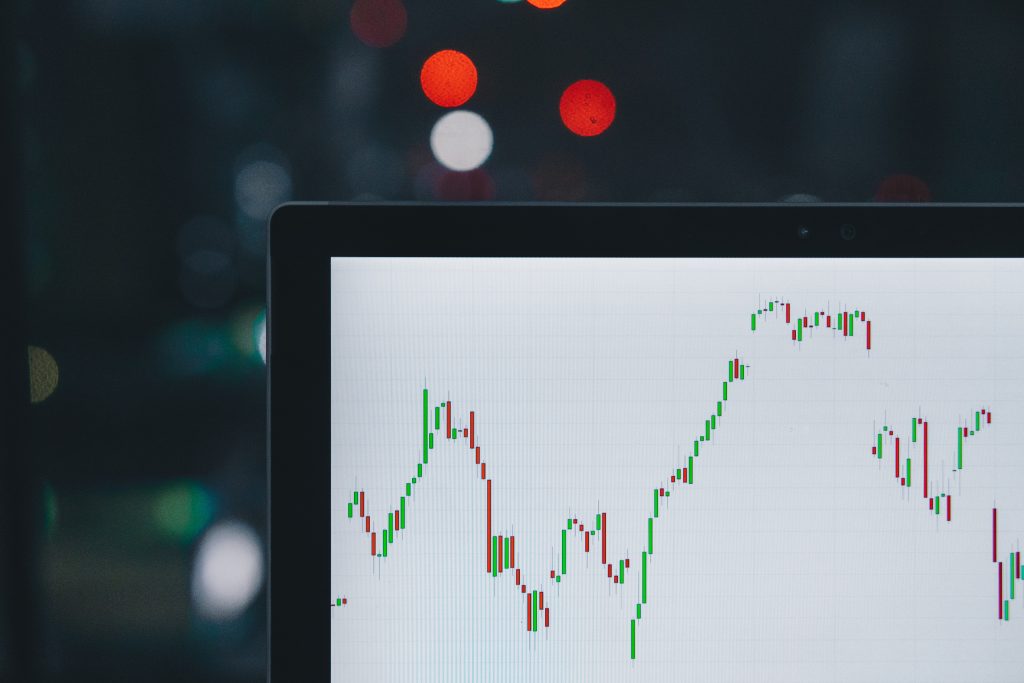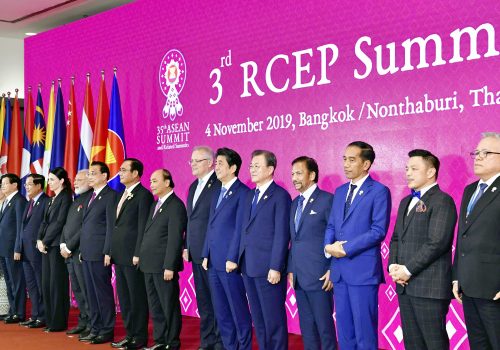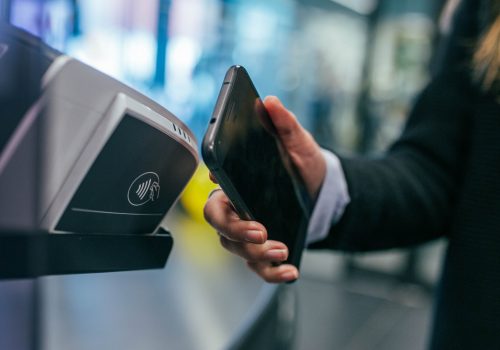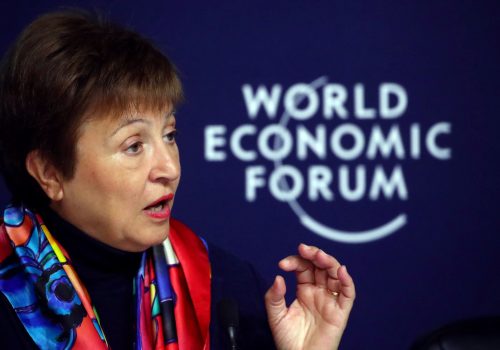The full text of this paper is split across the various articles linked below. Readers can browse in any order. To download a PDF version, use the button below.
Status of and challenges to the economic order
Unlike the global trade system, the international financial system does not as yet exhibit outward signs of fragmentation. But the dark cloud looming over the global economy, which is slowly restarting as COVID-19 recedes, is testing a global financial system, now in uncharted waters, even more than the 2008-09 Great Recession. More than two decades after the 1998-99 Asian financial crisis and a decade after the 2008-09 global financial crisis and Great Recession—events that profoundly shaped the economic policy views of world leaders and their constituents—there has been broad financial stability and modest adaptations to the changing weight of emerging actors in the Bretton Woods system. Nevertheless, even before the COVID-19 pandemic froze much of the global economy, there were concerns about the Bretton Woods system’s durability and unresolved tension between global and regional financial mechanisms.
The current global lockdown has already led to more than 100 nations requesting emergency assistance from the International Monetary Fund (IMF). How the IMF, the World Bank, and regional financial institutions address the post-COVID-19 economic challenge will determine the stability of the system. For example, some veteran financial policy advisers such as former US Treasury Secretary Lawrence H. Summers have suggested a need for global responses of similar magnitude to that the United States has taken to shore up its economy. In an opinion piece in the Washington Post, Summers and former British Prime Minister Gordon Brown suggested debt forgiveness to the poorest nations and that the IMF issue well over $1 trillion in Special Drawing Rights (SDRs) to stabilize indebted developing nations. The United States, which has veto power over IMF decisions, has not acceded to any additional IMF resources.
Despite much speculation about its displacement by the RMB, euro, or the SDR basket of currencies, the US dollar’s role as the major global reserve currency has, if anything, strengthened—the US dollar now accounts for 62 percent of global currency reserves. Substantial structural and political impediments to the euro and/or RMB becoming competing global reserve currencies are likely to persist until 2030 or beyond. (See discussion below.)
This reality, which has enabled the United States to unilaterally impose extraterritorial sanctions with the threat of losing access to the US financial system, has alarmed many in Europe and Asia. It could lead to fragmentation if global-scale alternative forms of payment for trade and financial transactions are eventually devised. Moreover, global institutions still do not fully reflect the steadily increasing weight of emerging economies in the world economy—Asia accounts for around two-thirds of annual global growth.
At present, two key questions regarding the future governance and effectiveness of the IMF loom. One is a prospective legitimacy issue, the ability (and political will of) the United States and the EU to further adapt IMF governance to reflect the shift in the center of gravity of the global economy to the East and South. This question will almost certainly be underscored by the financial stresses from the economic crisis caused by the COVID-19 pandemic. The degree of financial stress will be driven by whether a restored economic growth momentum will be evident by 2021 or if there will be a slow, protracted recovery.
The second question is born out of the degree of frustration due largely to IMF inefficacy and mistakes during the Asian financial crisis and the contentiousness of the eurozone crisis in 2010: a need to resolve tensions and uncertainties between global and Regional Financial Arrangements (RFAs), and for a more effective crisis management framework for coordination between them. Should there be an automatic link to the IMF, what should be the basis for cooperation, or are some RFAs potential alternatives to the Fund? How the international financial institutions respond to the current crisis is likely to impact the answer to that question.
The 1997-98 Asian financial crisis brought into stark relief for the Asia-Pacific and other developing nations the problem of liquidity and restoring financial stability in times of crisis. The problem of how to effectively cooperate with RFAs was brought front and center for the IMF by the difficult experiences of the eurozone crisis, particularly because the EU was a mature RFA, closely linked to and its institutions modeled after the IMF.
In the twenty years since the Asian financial crisis, new official arrangements have been put in place globally to address the risk of financial crisis and instability. The IMF has seen its role affirmed, its governance structures reformed, and its capacity enhanced. The G20 process has added legitimacy to global economic governance. It has demonstrated effectiveness in global crisis management and has new measures aimed at fostering resilience. The IMF’s global role notwithstanding, the trauma of financial shocks and lingering concerns about the terms of IMF conditionality have spurred Asian efforts to create their own financial safety nets to address balance-of-payments and short-term liquidity problems. The economic shutdown caused by the COVID-19 pandemic is posing still greater liquidity problems for many developing nations and some developed economies as well. How the IMF, World Bank/ International Finance Corporation (IFC), and related institutions respond to this burgeoning debt crisis may shape the trajectory of regional financial mechanisms and their relationship with Bretton Woods institutions.
At present, most efforts to create regional shock-absorbing mechanisms are by design linked to the IMF.
At present, most efforts to create regional shock-absorbing mechanisms are by design linked to the IMF. However, resentful of their dependence on the IMF and anxious to cordon off their respective financial systems from the next global financial crisis, Asian economic managers continue to hedge with RFAs. These arrangements are largely untested and there are questions about the adequacy of coordination with the IMF. The risk of fragmentation of the global monetary order, while not imminent, remains a latent possibility, one that is perhaps only one financial crisis away. The COVID-19- induced economic crisis could become the crisis that breaks the camel’s back if most economies have not restarted by the fall of this year.
The quest for regional financial shock absorbers has spurred the development of more robust RFAs, most consequentially, with regard to magnitude and scope, in Europe, Asia, and in the BRICS countries—Brazil, Russia, India, China, and South Africa. While the Latin American Fund and Arab Monetary Fund already exist, these are orders of magnitude smaller—with less than $10 billion in reserves—and lack the resources and wherewithal to respond independently to major financial/liquidity crises. In the current fractious geopolitical environment, and as emerging economies like China and India seek weightier roles in global institutions, if another financial crisis of the magnitude of the one in 2008, as the current COVID-19-induced crisis could become, or a regional crisis that is beyond the capacity of regional mechanisms occurs the integrity of the global system could be at risk.
The specter of the IMF being superseded by regional monetary funds may appear far-fetched, but when the next financial crisis hits, region-centric trends in globalization and RFAs amid growing connectivity (e.g., BRI) could spark financial contagion that will be difficult to contain. The G20 had already called on the IMF to strengthen the global financial safety net well before the pandemic. At a virtual meeting in April, G20 finance ministers agreed to freeze all principal and interest on low-income nations’ debt until the end of the year. But, as discussed above, many financial experts suggest such debt will need to be forgiven, and IMF resources substantially expanded. That is to say, an order of magnitude along the lines of the United States’ $3 trillion financial package.
Whether this predicament is of too great a magnitude for regional mechanisms to cope with, incentivizes their separation, or pushes these regional bodies toward more global financial coordination remains an open question.
CMIM: The Asian case
The 1997-98 Asian financial crisis and ill-considered IMFimposed conditionality for bailouts led Japan to propose an Asian Monetary Fund in 1999. The idea dissipated in the face of US opposition. However, in May 2000, the finance ministers of the ASEAN+3 took a more modest step creating the Chiang Mai Initiative (CMI), a bilateral currency swap network. This was accompanied by the Economic Review and Policy Dialogue (ERPD), a process to enhance transparency and mutual financial surveillance. The United States begrudgingly accepted this effort with the warning that any such endeavors should be linked to the IMF.
Holding more than $6 trillion in foreign exchange reserves (China’s share is $3.2 trillion), roughly half of the global total, the Indo-Pacific region (China, Hong Kong, India, Japan, South Korea, and Taiwan) has the latent wherewithal to transform itself into an Asian Monetary Fund. But it is still a considerable distance from a policy consensus, the technical expertise and experience, or the political will to separate from or compete with the IMF. Nonetheless, the 1997-98 crisis generated a concerted regional effort to protect against future crises and to undertake policy reforms that are geared toward long-term financial resilience and economic growth. When faced with the 2007-09 global financial crisis, the Asian region survived without major dislocations.
Since its beginning as a network of bilateral currency swap arrangements for short-term liquidity problems, the CMI has incrementally evolved, though its final trajectory remains uncertain. After creating the CMI, in 2010, ASEAN+3 finance ministers and central banks increased the total resources to $120 billion and changed the name to CMI-Multilateralization (CMIM). In 2012, the finance ministers decided to double this amount to $240 billion. This went into force in 2014 along with a new precautionary crisis prevention facility for rapid disbursement in the event of immediate liquidity problems. The CMIM’s Precautionary Line would allow members to draw unlinked IMF funds every six months for up to two years. The five largest ASEAN countries could access up to $22.76 billion in combined linked and unlinked funds. Longer-term funds, and any amount more than 30 percent of a country’s quota, would require CMIM facility approval, in close consultation and cooperation with the IMF.
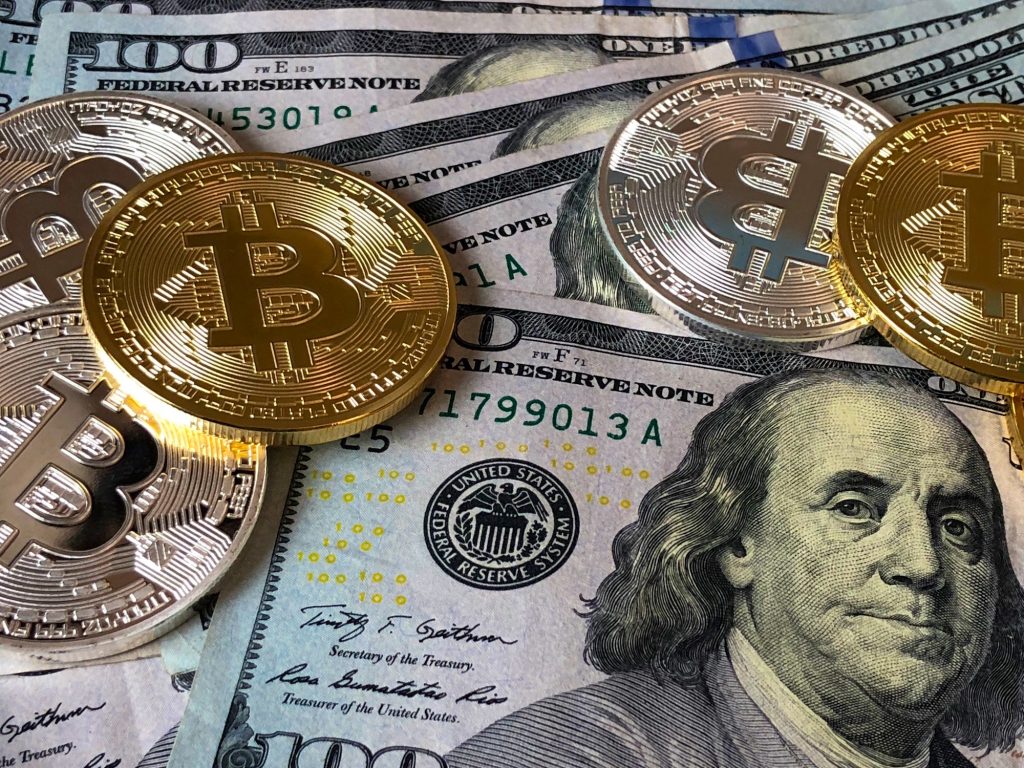
The CMIM is roughly divided into major creditors (China, Japan, and South Korea), which have committed 80 percent of the $240 billion, and the most prospective borrowers, the ASEAN 10 (Brunei Darussalam, Cambodia, Indonesia, Lao PDR, Malaysia, Myanmar, the Philippines, Singapore, Thailand, and Vietnam), which have committed the remaining 20 percent. The CMIM has a complex decision-making structure that precludes any one member from dominating. Related to the proportion of foreign currency reserves their central banks have committed (it is important to note that there is no paid-in capital), China, Japan, and the ASEAN 10 each have equal voting shares of 28.41 percent, while South Korea has a smaller share of 14.77 percent. A two-thirds supermajority is required to approve a decision. It is also worth noting that beyond the CMIM, its member states have an additional $160 billion in bilateral currency swaps among them.
Under the current arrangement, CMIM members may draw up to 30 percent of their quota without an approved IMF program. The question of the CMIM’s link to the IMF has been a topic of debate since its inception and has not abated. For more than five years, CMIM member states have debated raising the credit portion that is delinked from the IMF to 40 percent. Political divisions, high regard for the IMF among many Asian participants, and the absence of any compelling crisis have undermined this debate.
In 2011, in an effort to close the gap and prompted by the ERPD, the ASEAN+3 (ASEAN 10 plus China, Japan, and South Korea) ministers agreed to establish the ASEAN+3 Macroeconomic Research Office (AMRO), based in Singapore, to create their own institution to monitor member economies and advise CMIM decision-making.
The process of building AMRO’s capacity is still in its early stages, though significant progress has been made. AMRO has rotating directors and six advisers—three from the “+3” nations and three from the ASEAN 10. It has grown considerably from its initial staff of twelve. In 2016, it officially became a separate, formal international organization. In 2017, AMRO publicly released its Regional Economic Outlook for the first time. But the extent to which AMRO should disclose its macroeconomic country assessments and policy recommendations is still a matter of some internal debate. While AMRO’s evolution continues, its chief economist, Hoe Ee Khor, said, “CMIM is in its very early stage.” Whether AMRO will attain the ability to be forthright and with candor publicize its members’ macroeconomic and financial strengths and weaknesses—and recommend sometimes painful policy solutions—is another question. Some argue that well into the future, AMRO will be too small and lack the quality and size of the IMF to compete with it and would be well-advised to recognize a division of labor with the IMF.
Internal debate on the scope and role of the CMIM continues. Whether the CMIM is equipped to respond to another financial contagion is a key question. It has been pointed out that the IMF packages for South Korea ($58.2 billion) and Indonesia ($42.3 billion) were of a magnitude beyond that which the CMIM could match. Some have advocated options like the doubling, or more, of the CMIM’s capacity to $500 billion and/ or transforming the CMIM from pooled reserves to a fund with members providing capital. Such aspirations, however, represent an isolated view as they would likely transform the CMIM into an IMF competitor or alternative organization like the Asian Monetary Fund—a highly ambitious and risky course for an entirely unproven institution.
The CMIM’s trajectory will be shaped by the interplay of political rivalries and internal tensions between its major creditors and prospective borrowers. Competing visions of the world order may be a factor: Abe is ardently committed to sustaining the current rules-based order; China, which to date remains invested in the IMF, has sought to provide public goods to fashion new, more Sino-centric institutions like the Asian Infrastructure Investment Bank (AIIB), the BRI, and the BRICS New Development Bank and Contingent Reserve Arrangement (CRA). China has also expressed an interest in turning its RMB into a competing global reserve currency, though, given the internal dynamics of the Chinese economy, that remains at best several decades into the future.
Indeed, the single-most important point about the CMIM is that it has never been utilized.
Indeed, the single-most important point about the CMIM is that it has never been utilized. How it would work remains in the realm of the hypothetical. It is worth noting that when South Korea had major liquidity problems during the 2007- 09 global financial crisis, it did not turn to what was then the CMI or the IMF, but instead executed a $30 billion currency swap with the US Treasury. As C. Randall Henning, a professor of international economic relations at American University’s School of International Service, writes: “Until [CMIM] disburses, questions will linger over whether the member states of the region have the political cohesion and technical mechanisms required to operationalize such assistance.”
In the interim, as has been the case in Asian and other developing country liquidity crises, another aspect of the US dollar being the world’s global reserve currency is that it often plays the lender of last resort. The IMF is not being weakened or supplanted by an Asian alternative, nor is there any momentum in that direction. On the contrary, recognizing the complementary role they can play, there has been a desire to link the global and regional components. Serious mistakes notwithstanding, the IMF’s rich track record, monitoring and surveillance capacity, and battle-tested and lessons-learned financial crisis response experience is unlikely to be rivaled by any regional RFA.
BRICS Contingent Reserve Arrangement (CRA)
While Japan catalyzed Asian RFA initiatives at the turn of the century, China has since driven new RFAs and other new multilateral lending banks. Though more modest in scale than the CMIM, the BRICS Contingent Reserve Arrangement (CRA) was launched at the same time as the New Development Bank in 2014 and came into force in July 2015. Like the AIIB, both were animated in response to the 2007-09 global financial crisis, and both were seen as China-backed efforts to forge institutions of “South-South” cooperation between emerging economies and separate from the Western-dominated Bretton Woods institutions. Like the CMIM, the CRA is designed as a “self-managed” precautionary safety net to ease members’ balance-of-payments pressures.
The CRA has total committed resources of $100 billion, with individual commitments from China ($41 billion); Brazil, Russia, and India ($18 billion each); and South Africa ($5 billion). As with the CMIM, it is a committed, pooled capital of each nation’s central bank, not a fund. Similar to the CMIM, member states can draw up to 30 percent of their quota without having a parallel IMF accord; the other 70 percent is linked to the IMF. Each nation has a director, with a “one-man, one-vote” decision process. Unlike the CMIM, the CRA has no surveillance capacity and essentially relies on the IMF. Members must be in compliance with IMF surveillance and disclosure obligations (Article IV of the IMF’s Articles of Agreement). Given its modest size, the CRA could only be a supplement to the IMF, not an alternative. In any case, unlike the CMIM, there has been little further development of the CRA decision-making processes.
Another important parallel with the CMIM is that the CRA has never been utilized. To understand the fervor that spurred the creation of the CRA, one must not underestimate the enormous economic disruption and sense of systematic unraveling at the peak of the 2007-09 financial crisis. In 2008, many feared a level of financial failure more severe than anything since the 1930s. As the recovery unfolded and a sense of stability took hold, the psychology of a “new normal,” however fragile, emerged. The emphasis on emerging economy alternatives to the IMF gradually dissipated.
Similarly, despite initial fears in the United States that the AIIB would be a disrupter of the Bretton Woods multilateral development banks (MDBs), to date, most of its loans have been in partnership with either the Asian Development Bank (ADB) or the World Bank, and it appears more an addition— like the African and Latin American development banks— complementary to the World Bank/IFC. Regional financial safety net mechanisms, for the moment at least, appear to be complementary additions to the existing rules-based order.
2010-15 Eurozone crisis
In contrast with the CMIM and the CRA, which were regional reactions, the effort to cushion against the next global financial crisis, the eurozone crisis of 2010-15, was a seminal experience for both the EU and the IMF. It underscored the need for more effective regional-global coordination. With the European Commission, the European Stability Mechanism (ESM) with $900 billion in capital, a regional single currency, and a European Central Bank (ECB) one could be forgiven for thinking that sovereign debt crises like that in Greece and problem states like Cyprus, Italy, and Portugal might, with a bit of help from the IMF, be eminently manageable. But precisely because of the deep working and structural ties, and institutional culture (e.g., analytical and surveillance experience) of European institutions—the European Commission, the ECB, and the ESM—the frustrating and antagonistic protracted crisis between the IMF and the EU institutions was, for the IMF, a revelation of the inherent problems of working with RFAs to manage a crisis. The ESM, for example, is modeled after IMF governance practices and has collaboration with the IMF written into its founding treaty, specifically calling on euro area members requesting financial aid from the ESM to make similar requests to the IMF.
The contentiousness of the ESM and the IMF’s approaches to the Greek sovereign debt crisis reached a boiling point in 2012 as the IMF pressed for conditionality (large debt write-downs) that the ECB strongly opposed. Similarly, ECB-IMF differences over how to manage severe sovereign debt problems in Italy, Portugal, and other EU nations earlier in the 2010s pointed to differing imperatives driving the IMF and divergent calculations underpinning the European Monetary Union and the ECB. Obviously, Europe has a different dynamic with the EU being a monetary union (albeit one lacking a corresponding fiscal union) different from the one that operates within Asia. The fundamental issue of regional imperatives versus the IMF’s global financial role is a salient theme facing RFAs writ large.
In sharp contrast with the CMIM and the CRA, whose crisis management relationships with the IMF have never been tested, the 2010 eurozone crisis brought into sharp relief the following challenges: what is the sequencing for troubled member states to seek help from RFAs versus the IMF; what are the respective roles of RFAs and the IMF; who decides the quantity of debt that is sustainable; how are differences in conditionality of the structure and timing of financial assistance programs resolved; and, not least, the pace of decision-making in a crisis, which tended to be more lumbering in the EU as compared with the IMF. All of these issues would almost certainly loom larger in IMF collaborations with less-experienced RFAs such as the CMIM or the CRA in future financial crises.
Read the other post in this section: Unchallenged currencies and the IMF
Image: M. B. M., Unsplash
